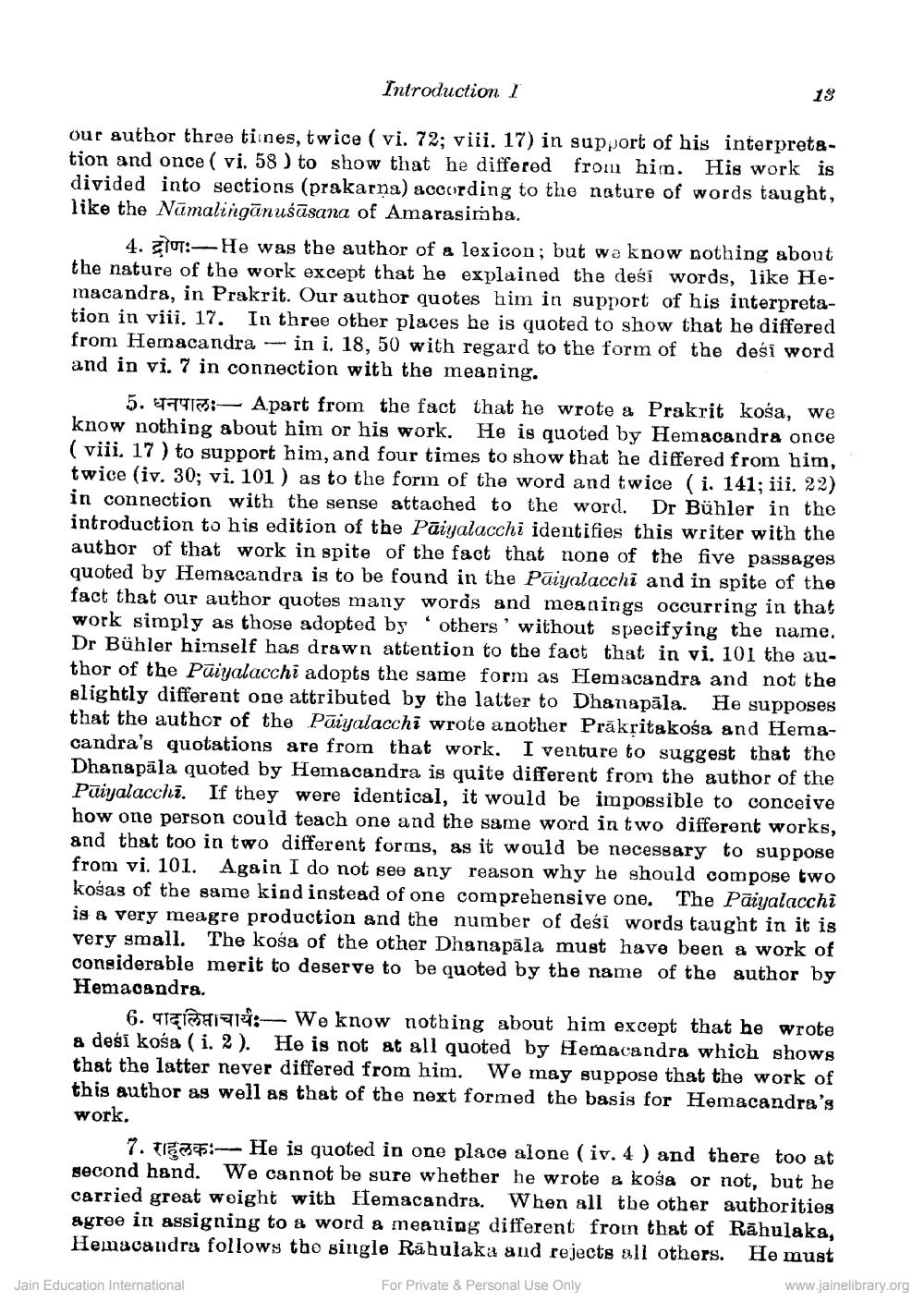________________
Introduction I
our author three tiines, twice ( vi. 72; viii. 17) in support of his interpretation and once ( vi. 58 ) to show that he differed from him. His work is divided into sections (prakarna) according to the nature of words taught, like the Nāmalingānušāsana of Amarasimha.
4. 10:He was the author of a lexicon; but we know nothing about the nature of the work except that he explained the desi words, like Hemacandra, in Prakrit. Our author quotes him in support of his interpretation in viii. 17. In three other places he is quoted to show that he differed from Hemacandra -- in i. 18, 50 with regard to the form of the desi word and in vi. 7 in connection with the meaning.
5. 791:- Apart from the fact that he wrote & Prakrit kośa, we know nothing about him or his work. He is quoted by Hemacandra once ( viii, 17 ) to support him, and four times to show that he differed from him, twice (iv. 30; vi. 101 ) as to the form of the word and twice (i. 141; iii. 22) in connection with the sense attached to the word. Dr Bühler in the introduction to his edition of the Paiyalacchi identifies this writer with the author of that work in spite of the fact that none of the five passages quoted by Hemacandra is to be found in the Paiyalacchi and in spite of the fact that our author quotes many words and meanings occurring in that work simply as those adopted by others' without specifying the name. Dr Bühler himself has drawn attention to the fact that in vi. 101 the author of the Pūiyalacchi adopts the same form as Hemacandra and not the slightly different one attributed by the latter to Dhanapāla. He supposes that the author of the Päiyalacchi wrote another Prākritakośa and Hemacandra's quotations are from that work. I venture to suggest that the Dhanapāla quoted by Hemacandra is quite different from the author of the Puiyalacchi. If they were identical, it would be impossible to conceive how one person could teach one and the same word in two different works, and that too in two different forms, as it would be necessary to suppose from vi. 101. Again I do not see any reason why he should compose two kosas of the same kind instead of one comprehensive one. The Pāiyalacchi is a very meagre production and the number of desi words taught in it is very small. The kośa of the other Dhanapāla must have been a work of considerable merit to deserve to be quoted by the name of the author by Hemacandra.
6. TEISIT: We know nothing about him except that he wrote a deši kośa (i. 2). He is not at all quoted by Hemacandra which shows that the latter never differed from him. We may suppose that the work of this author as well as that of the next formed the basis for Hemacandra's work.
7. TIEF:--He is quoted in one place alone (iv. 4 ) and there too at second hand. We cannot be sure whether he wrote a kosa or not, but he carried great weight with Hemacandra. When all the other authorities agree in assigning to a word a meaning different from that of Rāhulaka, Hemacaudr3 follows the single Rahulaka and rejects all others. He must For Private & Personal Use Only
www.jainelibrary.org Jain Education International




